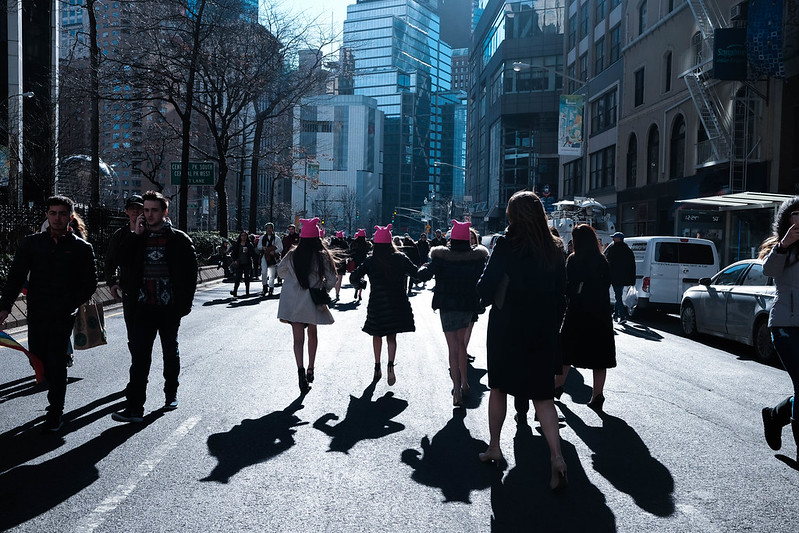Say it loud, urbanites: We all thrive on the back-breaking work of women, who make our cities tick and keep them afloat.

The theme of U.N.-Habitat’s World Cities Day, celebrated on October 31, was: “Better City, Better Life.”
A pointed sub-theme might be: “A better life for women in cities.”
Like nothing in recent memory, the pandemic has exposed the countless challenges facing women in the city—particularly low-income women, who use public transit, commute on foot and traverse unsafe streets, rendering them more vulnerable than most men and higher-income women to both physical and sexual violence and to infection with COVID-19.
This vastly increased vulnerability is truly global—from the streets of Nairobi to those of New York, low-income women are at far greater risk.
Also universal is how dependent cities are—we all are—on these women.
They care for our infants and elders, they prepare and sell us our food, they clean our homes and offices and subway cars. Their hard labor frees middle- and upper-income families to spend more hours at work and with our families, while enabling their own children and husbands to succeed in school and in higher-paying jobs.
Say it loud, urbanites: We all thrive on the back-breaking work of women, who make our cities tick and keep them afloat.
Speaking of “afloat!”—the specific theme for this year’s World Cities Day, which took place this year in Luxor, with a raft of virtual viewing opportunities—is “Adapting Cities for Climate Resilience.” The spotlight on urban adaptation could not be more timely, as we’ve seen urban neighborhoods ravaged by extreme weather events, from lethal wildfires to heat waves, to record-breaking storms to coastal flooding, all of which, again, puts targets straight on the backs of low-income women and their families.
This World Cities Day 2021, it’s beyond high time to ask how this disproportionate risk, burden and vulnerability for low-income women is ever going to change.
U.N. Habitat, in its tireless optimism, is calling once again for “poverty reduction, ensuring basic services and livelihoods, the provision of accessible, affordable and adequate housing, investing in infrastructure, upgrading informal settlements and managing ecosystems,” as the pathway to the good governance that will reduce climate-related risks for urban populations.
But first, policymakers and politicians and those in power—still mostly men, of course—must make the synaptic connections between their own ability to thrive, the unrecognized support from low-income women, and the vastly greater vulnerability and exposure of those on whom they depend to risk of illness, violence, even death.
In short, they need to care.
They need to recognize that their success and freedom depend substantially on those women’s spending four hours commuting each day to care for these leaders’ parents or children for 10 to 12 hours, all while worrying about the health and safety of their own; even in 2021, these leaders must finally recognize the humanity and the right of every citizen to thrive in the city and must invest public and private resources in their realizing that right.
Three sets of long-overdue investments would improve immeasurably the lives of urban women, and of all urban dwellers:
- Public Infrastructure: All our cities need safe streets, public transit and green space, meaning more and better lighting (deterring violence and crime), sidewalks with curb cuts (enabling those pushing strollers, walkers, wheelchairs to navigate safely), speed limits and enforcement, pedestrian overpasses on highways, and well-maintained parks and recreation facilities.
- Safe Housing: All our cities also need housing free of lead, foundations able to withstand powerful storms and sea level rise, and early warning systems designed to activate before storms bear down that will signal clear evacuation routes, where to shelter, and means of accessing emergency assistance.
- Response Capability: All our cities need to invest significant resources in responding to gender-based violence, with a known, dedicated office or facility where those who’ve been abused can go or call without fear or shame. There, they deserve to find civil servants and social workers trained to handle emergencies who, humanely and rapidly, can gather essential facts and mobilize safe and appropriate interveners, from health workers to violence interrupters to law enforcement.
To fully realize their right to the city, of course, working women will also need higher wages, paid family leave, convenient, affordable access to healthcare and education. Public transit routing and pricing must finally be reinvented, as well, to accommodate women’s patterns of use.
If those elected and tasked to lead their cities won’t finally acknowledge, honor, and protect the women who make their cities tick and enable them to succeed, why are they in charge?
Up next:





